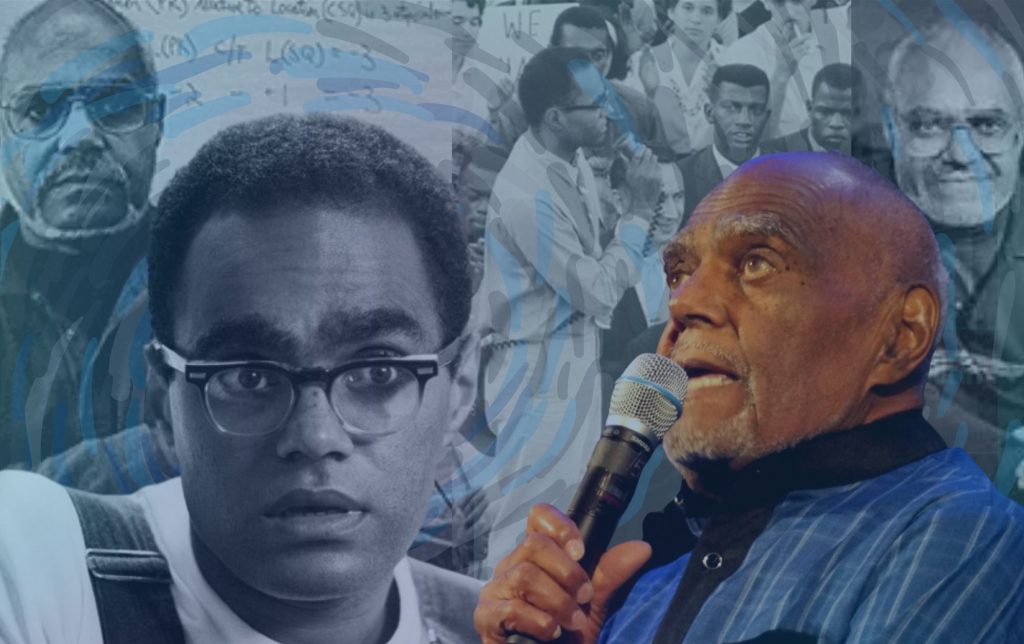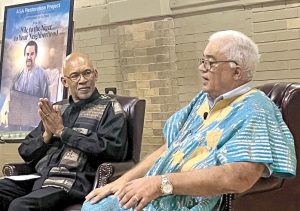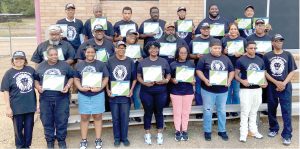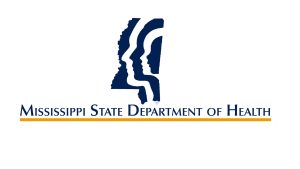By Dr. Ivory Phillips
JA Contributing Editor
Sunday, July 25, 2021 marked the end of a dedicated life, that of genius civil rights leader and teacher, Bob Moses. He was well-known to those familiar with the Civil Rights Movement, especially in Mississippi. For them, his passing was a deep loss because although it is long past the days of the 1960s movement, like a true soldier he never hung up his weapons and shield. This can be attested to by the fact that he delivered one of the most informative and eloquent speeches on democracy and racial justice ever witnessed by this writer on the occasion of the Medgar and Charles Evers celebration earlier this year.
Those too young or removed from his life would do well to become familiar with the contributions of Bob Moses, things accomplished despite the struggles. His was the kind of life worth emulating. They may never be able to fill his shoes, but they can certainly find a great deal in his life that would stand them in good stead as thinkers, educators, organizers, or activists. While we realize that this is a trite expression, Moses was truly “one of a kind,” standing heads and shoulders above most others in his line of endeavor.
He was born Robert Parris Moses on January 23, 1935, the son of Gregory H. Moses and Louise Parris Moses. With two other siblings, the family lived in the public housing project called The Harlem River Houses. His father worked as a janitor and his mother was a housewife. They sold milk from a Black cooperative in order to supplement their income. Being a home maker, his mother had the time to frequently take him to the library. Both parents strongly encouraged the educational pursuits of their children. In addition to that, Moses was also no doubt influenced by the fact that his grandfather was an admirer and follower of Marcus Garvey as well as a Baptist preacher.
As a teenager, Moses won a scholarship to and graduated from Manhattan’s prestigious Stuyvesant High School. He went on to earn a Bachelor of Arts in Philosophy and French from Hamilton College, while he also played baseball. He then earned a Masters of Arts in philosophy from Harvard University in 1957. He suspended his Ph.D. studies the next year in order to help care for his hospitalized father, after the death of his mother.
Back in New York City, Moses began teaching at Horace Mann School in the Bronx. He also began serving as a private tutor for rock and roll artist Frankie Lymon.
With a bit of hindsight one can see that virtually everything about his background was preparing Moses for his life’s work in civil rights first and foremost, and in education and human rights, secondarily. Apparently, as a result of his position with the school and his traveling with Frankie Lymon and the Teenagers, he was motivated to become involved in the struggle for racial justice that became the Civil Rights Movement.
His earliest efforts in the movement involved participating in a march to help integrate the public schools of Washington, DC in 1959. The next year, he volunteered to work with the Southern Christian Leadership Conference (SCLC), but, with some disenchantment, soon joined the Student Non-Violent Coordinating Committee (SNCC).
As a young activist, Moses became a field secretary with the Student Non-Violent Coordinating Committee and director of its Mississippi Project in 1961. In this capacity, he began organizing voter registration drives in Pike County and Amite County. He was beaten and arrested and even escorted out of the county after an unsuccessful lawsuit pursuant to the beating and the continued voter discrimination against Black residents. On another occasion, he demonstrated his bravery by traveling to Greenwood to spend the night in the SNCC house from which armed white terrorists had driven the local SNCC workers the night before. Moses, in fact, constantly endured and stared-down violence and threats of violence while working in the Movement in Mississippi.
In 1964, he became co-director of the Council of Federated Organizations (COFO) and was a mastermind behind the 1964 Freedom Summer Project that brought more than a thousand Black and white college students to Mississippi to teach voter education, Black history, and general subjects in “The Freedom Schools.” The Freedom Schools were another of his ideas.
Moses was appreciated by Dr. Martin Luther King, Aaron Henry, and others for the vision and activism that he brought to the struggle. This was important because the leaders of these other groups, SCLC and the NAACP, generally operated from top down (in the case of SCLC), or through legal challenges (in the case of the NAACP). Moses and SNCC believed in grassroots organizing, in this case, teaching the local people to speak and act for themselves so that after SNCC was long gone, they could successfully carry on. This philosophy that change best comes from the bottom up he had adopted during his college days.
Like Fannie Lou Hamer, Unita Blackwell, and other activists, Moses helped create the Mississippi Freedom Democratic Party and developed the strategies needed to conduct party elections and to challenge the seating of the all-white regular Democratic Party delegates at the 1964 Democratic National Convention.
Moses resigned from COFO in late 1964, feeling that too many were beginning to lean on him as a crutch rather than developing and standing on their own and due to his disenchantment with responses by white liberals to the Movement. He turned away and began to help organize protests against the Vietnam War, but was sure to link the anti-war effort to the civil rights struggle, as had been done by King and others.
In 1982, he was given a MacArthur Fellowship. With the award money, he began the Algebra Project, an idea that followed his teaching math at a public high school in Cambridge, Massachusetts. He developed the project and imported it to Lanier High School in Jackson, Mississippi. He later taught high school algebra in Miami.
In 2006, he was appointed the Frank H.T. Rhodes Class of ‘56 Professor at Cornell University. In 2012, he was appointed as a visiting professor of African American Studies at Princeton University.
Moses co-authored Radical Equations – Civil Rights from Mississippi to the Algebra Project with Charles Cobb and co-edited Quality Education as a Constitutional Right. Both of those works were based upon his experiences as a civil rights advocate and teacher.
Over his lifetime, in addition to the MacArthur Fellowship, Moses has received the Heinz Award on the Human Condition, the War Resisters League Peace Award, the Puffin/Nation Prize for Creative Citizenship, the Margaret Chase Smith American Democracy Award, the James Bryant Conant Award, and the Alphonse Fletcher, Sr. Fellowship. He became a founding member of the Phi Beta Kappa chapter of the University of Mississippi. He received honorary doctoral degrees from Hamilton College, Harvard University, Swarthmore College, Ohio State University, and University of Missouri. Even more recently and more fittingly from the state of his greatest contributions, he received the Charles and Medgar Evers Award.
Moses, who died on Sunday, July 25, 2021, in Hollywood, Florida, at the age of 86, leaves to mourn his passing, former wife Dona Richards, current wife Janet Jemmott, four children – Maisha, Omowale, Tabasuri, and Malaika, and a nation of beneficiaries of civil rights activities. He leaves to emulate his exemplary life, a nation of young warriors and many more who are unborn, but will live to learn of him.




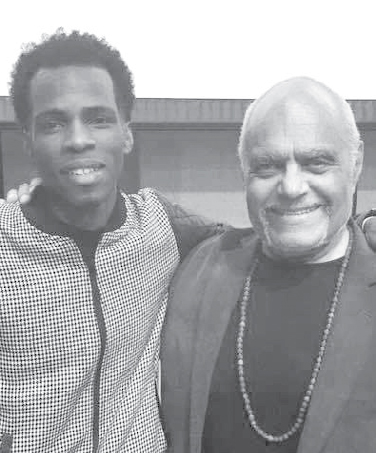
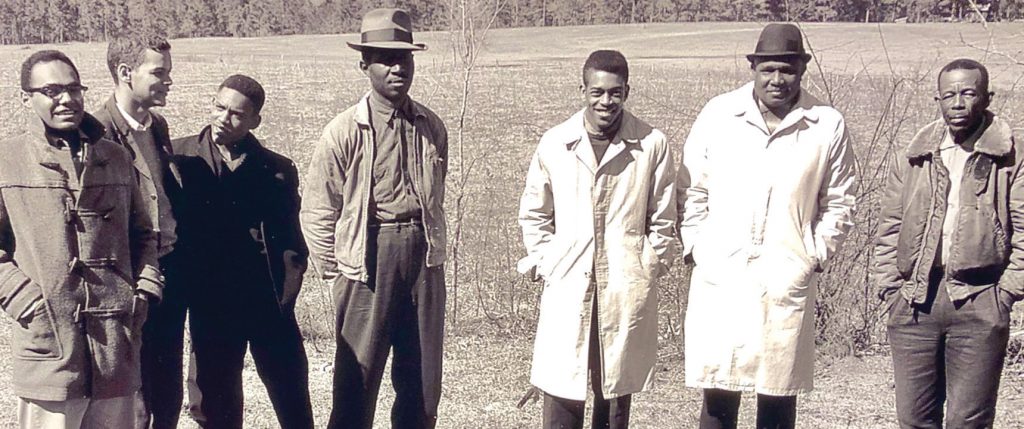
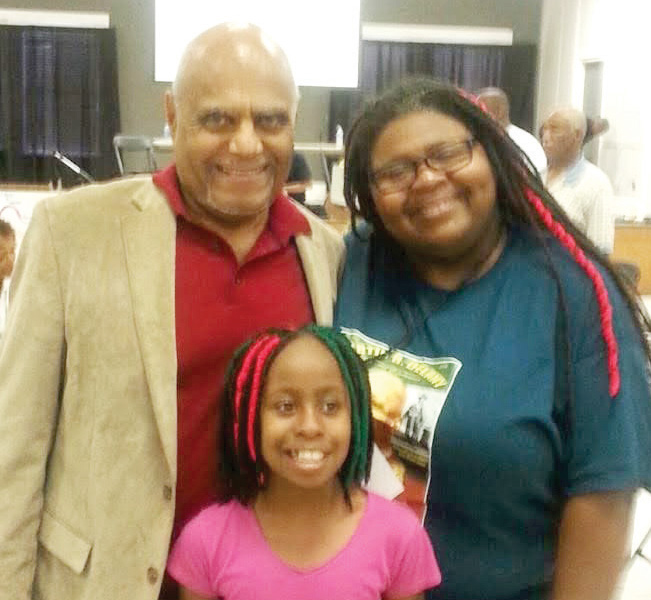
WHEN ROCK MEETS WATER IN A WELL
(Bob Moses and the Mississippi Children)
Let us
Love like he loved
Contemplative, quiet, whispers that speak in tones that demand you listen to your own thoughts before engaging with his.
A deep well with still waters resting within
Each person a pebble thrown in
Interruption, upon contact, when rock meets water
water breaks, rock wades, rock moves at a slower pace
giving it just enough time to fall
gently to the bottom, or
change is composition through erosion
so it can float
so it can mix in
so it can blend
Little pebbles of consciousness
Hard headed but Mississippi Deep South trained
to be respectful to ALL adults
Humble to ALL elders
To say, “Yes sir, Dr. Moses”
when he wanted us to just call him Bob
was (for me) a ferociously hard transition to make
It was out of order but part of a new establishment of boundaries
Deference to each other seeped over into deference to a system that did not show us mutual respect – and we knew that – but we were raised to try to stay alive
Sometimes, we have to let go of certain things to empower ourselves to be able to access the Dream.
My mother knew I worked for “that Moses man”
She organized a visit of the Young People’s Project Reading and Writing Workshop to visit Bethune Middle School in Shreveport for a Saturday Teacher Training Workshop.
She was the kind of mover and shaker that trained me to be able to “do the work” Bob Moses and his children were doing in Mississippi.
I watched my mother and father LOVE Black people.
I watched their actions toward ‘the least of these’, ‘the meek’
They taught me how to give of myself to my people, so
When I met Bob Moses I was ready to work, I just needed to know my own worth
I needed to grow into an understanding of my own moves
I needed to understand
the value is in the valley and
in the process of
climbing up or falling down the mountain.
The constant
conversation with SELF.
The fullness in knowing the power of WATER to temper the movement of a falling piece of rock.
To realize each rock is made in its own unique way, and
it has its own consciousness and
it can choose
to break it self apart
to remake itself in part or
stay stationary and still
at the bottom of the well
until
something
creates movement,
a move meant
to give those of us at the bottom
opportunities to rise
on our own terms
through our own
Mississippi Eyes.
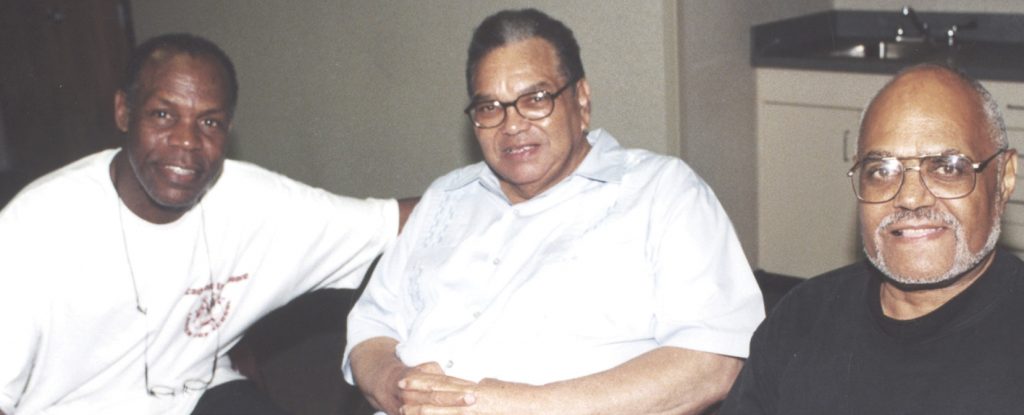
Doc,
Thank you for using your time, talents, and treasures while on this Earth to make this a better place.
You are one of the reasons I believe in the impossible. To me, you were a modern-day Moses. I cannot thank you enough for the sacrifices you made before I was even born. I would like to believe that a group of students from Mississippi was on your mind as you fought to make this world a better place by ensuring we could vote without the oppression of Jim Crow and illegal voting practices.
You gave young people all over the country a seat at the table. As a high school student, I often watched you sit back quietly and observe as we worked, debated, and sometimes argued over decisions and wondered, why is he not saying anything? It wasn’t until I was older that I realized that this is what a seat at the table feels like. A group of like-minded people who have the same agenda, but different paths to getting there. In your silence, I found my voice.
To my Algebra Project and Young People’s Project family:
“And now, dear brothers and sisters, we want you to know what will happen to believers who have died so you will not grieve like people who have no hope.” –1 Thessalonians 4:13
Bob’s belief was that this country would one day live up to its founding principles:
“We the People of the United States, in Order to form a more perfect Union, establish Justice, insure domestic Tranquility, provide for the common defense, promote the general Welfare, and secure the Blessings of Liberty to ourselves and our Posterity, do ordain and establish this Constitution for the United States of America.”
Bob is now guiding us as an ancestor. Listen. Don’t you hear him? “Now folks we still have work to do…”
Bob, you are indeed in Eternity and if I know you, you are still trying to work. Asking God, “What can I do?”
I believe God has one more “impossible” with you on the team and we will be waiting. It was an honor to know you, learn from you, and love you.
Well done. May the work you’ve done speak for you. Enjoy swimming in the oceans of Eternity.
Thank you to Janet, Maisha, Omo, Taba, and Malaika for sharing him.
~ Rosalyn Pendleton
A quiet force for freedom and justice: The legend, educator and difference maker
By Beverly Wade Hogan
Robert “Bob” Moses was an American hero … a living legend. The legacy of his lifework reminds us that greatness is not measured by how great you are but how great others come to be because of you. Like quiet thunder sending a rumble through the elements, Bob Moses with his quiet demeanor changed the world with his force of vision, courage, commitment, intelligence and the will to improve the world in which he lived. He touched the lives of countless young people and fueled their dreams to achieve and succeed.
Years before I had the privilege of meeting Bob Moses face to face and forming a collegial friendship with him, based on mutual respect, I knew of him. I was touched by his work and inspired by his apparent intelligence, courage and commitment to be a catalyst for social change.
Bob traveled a journey of purpose. He was not a child of America’s South yet he was drawn to come to the Deep South where he planted seeds of justice’s goodness that took root and spread across the world. He was born and raised in Harlem. He was educated in the local schools and pursued post-secondary education at Hamilton College in Clinton, New York where he became a Rhodes Scholar. He was deeply influenced by the work of French philosopher Albert Camus and his ideas of rationality and moral purity for social change. He took part in a Quaker-sponsored trip to Europe and solidified his beliefs that change came from the bottom up. He would later comment that he was taught about the denial of the right to vote behind the Iron Curtain in Europe but he never knew that there was the denial of the right to vote behind the Cotton Curtain here in the United States. This exposure might well have been Bob’s defining moment.
He had the opportunity to travel broadly which is, in my opinion, a valuable part of education. With diversity of geography, thought, worldview and education, Bob joined the civil and anti-war rights movements in the 1960s. His work as the field secretary for the Student Nonviolent Coordinating Committee (SNCC) brought him to the state of Mississippi in 1961 where he served as the director of the SNCC’s Mississippi Project. His name ultimately became synonymous with the work of SNCC. One could not mention SNCC without likewise calling Bob’s name. He shared many stories about his experiences in Pike and Amite counties to register African American voters. He had many life-threatening encounters in his efforts to open the political process to hundreds of African Americans who had been shut out of the process since 1890 by poll taxes, residency requirements and subjective literacy tests. He was the first African American to challenge white violence in the county, filing assault charges against his attacker. The all-white jury acquitted the man, and the judge told Bob he could not protect him, providing him an escort to the county line. Bob had the courage and staying power to continue his transformational work.
Bob lived an exemplary life. Graduating from Harvard University with both a master’s degree and doctor of philosophy degree, he could have chosen any path to greatness and success he desired. But Bob Moses chose the path of a difference maker, devoting his lifework to opening a closed society so all God’s creatures could enjoy the bounties of his good earth. He co-founded the Mississippi Freedom Democratic Party along with Fannie Lou Hamer and Ella Baker. He received a MacArthur Fellowship and used the rewards to start the Algebra Project. He was co-director of the Council of Federated Organizations (COFO) and the lead organizer of COFO’s Freedom Summer. His lifework made the world a better place for all humankind.
Bob lived a legendary life. He did work he loved and helped transform the world. Derrick Johnson, the CEO of the NAACP, described Bob as “a giant, a strategist at the core of the Civil Rights Movement.” Of his work with the Algebra Project, his colleague, Ben Moynihan, said, “Bob really saw the issue of giving hope to young people through access to mathematics literacy as a citizenship issue, as critical as the right to vote.”
His lifework is often characterized by his capacity to listen and work with local people to effect the necessary change in their communities. This was true of him whether registering African American voters in parts of Mississippi most noted for opposition to social change or with the Algebra Project where he worked to raise the floor of math literacy for young people across the nation.
This is the life of a legend – one who dedicates his life to making a difference. Bob Moses was a legend, a hero, educator extraordinaire and a difference maker in my book. His lifework symbolizes the difference one can make when he understands the prize and keeps his eyes and heart clearly on it. Bob did not care about public acclaim. He did not strive to simply be something but to do something that would make a difference in the lives of others in ways that give all humankind a fairer playing field.
His legacy will stand as an example to all of us to persist in the continuing pursuit of social justice and press forward for the progress we still need to see in our state and nation, especially in today’s climate of visible political and racial divide, and voter suppression. The essence of his work moved America closer to becoming a truer democracy. And, because of the work of people like Bob, our work today must be dedicated to upholding the principles of democracy and pushing against any laws that would obstruct rather than enhance eligible citizens’ right to vote. We owe Bob’s legacy and those who fought and/or died in the struggle with him nothing less.
Bob Moses’ energy and life-long dedication to advance civil and human rights and elevate the knowledge and skills of young people through math literacy will continue to inspire generations of young people. Among my many rewarding “red letter” moments during my years as President at Tougaloo College, presenting the Light of Justice Award to Robert Parris Moses ranks at the top.
Paraphrasing William Blake, on July 25, 2021, Bob Moses lightly kissed the joy of life as it flew and now lives in eternity’s sunrise.
RIP Robert ‘Bob’ Moses: The Warrior of Self-Love and Critical Thinking
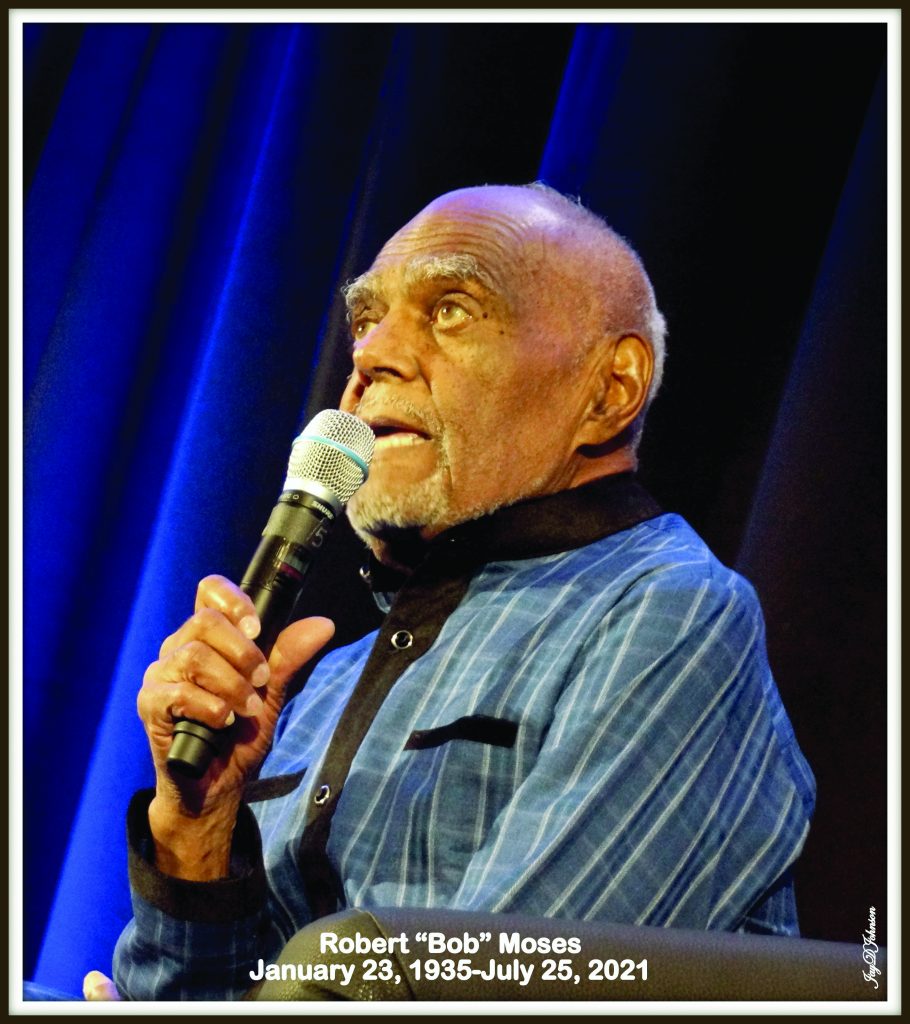
By C. Liegh McInnis
Jackson Advocate Guest Writer
I often wondered how someone as gentle as Robert “Bob” Moses could be so powerful. We don’t usually associate power with gentleness. Yet, Moses was one of the most gentle, kind, and soft-spoken persons I ever met. Leaders, especially Civil Rights leaders, are traditionally fiery not tranquil. It took me a moment to realize that determination can be both fiery and tranquil, especially when determination is covered and guided by love. But, for Moses, love is not an attempt to placate white folks.
As Moses stated to award-winning poet, novelist, and literary theorist Robert Penn Warren during an interview for the Who Speaks for the Negro?, the majority of the members of the Student Nonviolent Coordinating Committee (SNCC) did not agree with Dr. Martin Luther King, Jr.’s, philosophy that “they have to somehow love the white people that they are struggling against.” For Moses, love is the natural energy of the universe, like light, that is perpetually working and expanding to create beauty through order, harmony, and justice. Thus, love is no respecter of person; yet, it willingly feeds and serves all who have the capacity to be just. Moreover, the inner peace of morality, of longsuffering, of seeing the humanity in all peoples, and of knowing that hatred is a cancer that kills human beings one cell at a time is what fueled Moses’ gentleness.
In my short, twenty-plus years of knowing Moses, I never heard him raise his voice; yet, I witnessed him command a room with a love powerful enough to baptize us all. I saw all types of people go silent in awe for what he did, what he was doing, and what he was going to do because he was always in the process of teaching us how to love/live better today than we loved/lived yesterday.
However, for Moses, love is a plan. Love is an action verb. Love is critical thinking. Love is loving yourself enough to force others to love you. Love is not fear. Love is not pride. Love is not turf wars. Love does not desire to be the center of attention. Love is not a resume bullet point. Love is not status. Love is not working to have white folks think highly of you. Love is not lust. Love is not avarice. Love is justice. For Bob Moses, love is justice. And, his work with SNCC, the Algebra Project, and the generational fruit that his work bears are all testaments that innate to love are critical thinking and work.
As such, his life is a blueprint for Black folks to liberate themselves from white supremacy (police brutality, discriminatory hiring and promotion practices, discriminatory housing practices, discriminatory education policies, voter suppression, discriminatory charging and sentencing, and more) by using their own resources and by forming alliances with others who can help but not dictate the goals and methodology of Black sovereignty.
Moses was inspired to get involved in the Movement because he saw a group of North Carolina A&T University students sitting-in a Woolworth in 1960 demanding to be served, and he thought to himself, “They look like I feel.” If a picture is worth a thousand words, then those students resonated the pride, anger, frustration, and resolve that burned in Moses. That was one of the seminal moments that sparked Moses into action.
By then, Moses already had earned a BA in philosophy and French while playing basketball at Hamilton College and an MA in philosophy at Harvard. But, his mother’s death and father’s illness caused him to leave his PhD program and return home to New York City. It was during this time that Moses became a tutor for Frankie Lymon of the Teenagers and was introduced to African-American towns and communities across the nation. This experience exposed him to the segregated yet well-ordered African-American lives that shared a common history and culture. It affirmed in Moses the beauty and power of Black folks and his understanding that they just needed to be given the tools to do nationally what Black folks had been doing locally for years – surviving by turning hell into livable. The combination of his family upbringing, his academic studies, his brief time in Europe, and his time traveling the country with Lymon confirmed for Moses that Black folks were all the leadership that they needed. They just needed to be taught to see themselves as their own liberators. Thus, regardless of his work or organization, the core of Moses’ productivity remained teaching Black folks how to free themselves.
He initially began in 1960 by traveling to Atlanta, Georgia, to work with Dr. Martin Luther King, Jr.’s, Southern Christian Leadership Conference (SCLC), but there was little grassroots work being done there. Similarly, the NAACP didn’t appeal as much to Moses either because the bulk of their work was litigation and not direct action. To be clear, many members of the NAACP were involved in direct action, but it was usually in connection or collaboration with other organizations.
Then, in 1960, Moses became a field secretary for the SNCC, and went to Cleveland, Mississippi, to work with NAACP veteran Amzie Moore who actually put voter registration on SNCC’s agenda, but the Black folks in Cleveland were not ready for a mass movement. So, Moore connected Moses with another NAACP veteran Curtis Conway “C. C.” Bryant in McComb, Mississippi, and that’s when they started moving mountains as Moses met two young men, Hollis Watkins and Curtis Hayes, who were eager to work.
Under Moses’ leadership and with help from too many folks to name, such as the great strategist Ella Baker, SNCC developed two programs of work: direct action led by Diane Nash and Marion Barry and voter registration lead by Moses and included greats, such as Fannie Lou Hamer. This dual-threat shook the confederate fibers of Mississippi and the South, eventually bringing Jim Crow to its knees with the help of so many, such as Dorie and Joyce Lander, Vernon Dahmer, and Clyde Kennard, just to name a few. But, the sacrifice was great, as Moses and others were brutally beaten, while others were killed.
In 1963, Moses, Jimmy Travis, and Randolph Blackwell were driving from Greenwood, Mississippi, when shots were fired into their vehicle, hitting Travis who was hospitalized but survived. However, many did not survive, including Dahmer, Kennard, and fifty-six-year-old farmer Herbert Lee who was killed by a white state legislator, E. H. Hurst, in front of several witnesses for attending a voter registration class organized by Moses. As expected, Hurst was cleared of all charges by an all-white jury. While these types of assaults and killings were normal, the murders of James Chaney, Andrew Goodman, and Michael Schwerner in 1964 impacted the nation in a way that only the murder of Emmett Till had in 1955.
In the face of this type of terror, Moses became the first African American to file assault charges against a white person. Of course, the white person was acquitted of the charges, but Moses’ actions sent a message to Blacks and whites that a new day was dawning in which fear would no longer stop Black progress.
Simultaneously, Moses was helping to organize the 1964 Freedom Summer Project and co-founded the Council of Federated Organizations (COFO), which served as the umbrella group for SNCC, Congress of Racial Equality (CORE), NAACP, and SCLC to work collectively on the Freedom Summer Project. While doing this, Moses and others co-founded the Mississippi Freedom Democratic Party (MFDP), which challenged the all-white regular Democratic Party delegates from Mississippi at the party’s 1964 national convention in Atlantic City, New Jersey.
Because the Democratic Regulars had for decades excluded African Americans from the political process in Mississippi, the MFDP wanted their elected delegates seated at the convention. Their challenge received national media coverage and highlighted the Civil Rights struggle in the state, with one of the highlights being Hamer’s famed “I Question America” speech. Four months later, Hamer gave her noted “I’m Sick and Tired of Being Sick and Tired” speech in Harlem, NY, with Malcolm X, aka el-Hajj Malik el-Shabazz. The rise of Hamer from a sharecropper to a major Civil Rights voice highlights Moses’ and SNCC’s ideology and methodology of helping everyday people become the voices and policymakers of their movement. Unfortunately, by 1966, Moses was forced to flee the country because he was notified that he had been drafted even though he was five years too old for the cutoff to be drafted. Living in Canada and Tanzania for close to ten years, Moses returned to America in 1976, pursuing graduate work in mathematics at Harvard.
After being notified by his daughter that a local high school did not offer Algebra, Moses began teaching Algebra at a public high school in Cambridge, Massachusetts. By 1982, Moses was teaching Algebra at Lanier High School in Jackson, MS, and developed the Algebra Project, which uses math to teach critical thinking, social awareness, and activism to give the poorest children with the traditionally lowest math scores the tools needed to change their circumstance.
The Algebra Project was Moses’ way of dismantling what he called “sharecropper education,” in which Black folks were educated just enough to be the perpetual labor base for white supremacy. He asserted that Algebra is a critical “gatekeeper” subject because mastering it is necessary for middle school students to advance in math, technology, and science; attending college is impossible without Algebra. I know this firsthand because my sister, Dr. Elizabeth McInnis, who has a PhD in educational technology, is a product of the Algebra Product.
According to Diane Cole’s “The Civil Right to Radical Math,” “At Lanier High School (Jackson, Mississippi), 55 percent of the students in the Algebra Project’s curriculum passed the state exam on the first try, compared to 40 percent of students taught with the regular curriculum. More students at junior high school sites who followed the Algebra Project curriculum scored higher on standardized tests and continued to more advanced math classes than did their schoolmates who followed standard curriculum.”
Yet, still not resting on his laurels, Moses developed the Young People’s Project, which features local artists and educators, such as Jolivette Anderson aka The Poet Warrior, to help engage students in their learning process. YPP uses mathematics literacy as a tool to develop young leaders and organizers who radically change the quality of education and quality of life in their communities so that all children have the opportunity to reach their full human potential.
According to Cole, “At its peak, the Algebra Project has provided help to roughly forty-thousand minority students each year. Contributions include curricula guides for kindergarten through high school, the training of teachers, and peer coaching.” As such, everyone should have a copy of Moses’ Radical Equations: Civil Rights from Mississippi to the Algebra Projects, which can be purchased at Amazon.com.
While my Pops knew and had crossed paths with Moses, it was only after meeting Anderson and then local community activist Derrick Johnson in 1996 that I worked on various events and programs coordinated by Moses. To be quite honest, had it not been for Anderson and Johnson, I, who was only interested in publishing poems and short stories, would have probably never done much of the community work that I’ve done. Other than teaching creative writing at the Juvenile Youth Court Center because my Pops was the senior counselor who forced me to do it because “he said so,” much of my local community work comes through my relationship with Southern Echo, YPP/Algebra Project, the Malcolm X Grassroots Movement, and the National of Islam. Fifty percent of that work is connected to the work and legacy of Moses.
At times like these, it is easy to be overly general and sweeping in our remembrance of someone. For me, it is the often simplistic distinction that I make between SNCC as a grassroots organization of the people and the NAACP as a more bureaucratic, top-down organization. And, the truth is somewhere between those poles. Yet, Moses (associated with SNCC) and Medgar Evers (associated with NAACP) were so intelligent and so loving that they defied simplistic definitions. As such, both were courageous foot soldiers who had the minds of generals. As leaders, neither ever asked anyone to do something that they had not already done. When Moses told people to be prepared to go to jail, it was because he had already been. When Moses asked folks to be good students, it was because he had already mastered Civil Rights warfare. And, Moses, like Evers, shined most in his ability to connect with, inspire, and teach common folks how to lead their own movement.
Unfortunately for Evers, while the local branches have always been and remained powerful, too much of the NAACP national leadership, for years, was disconnected from their local branches. However, it is interesting that the current national leader of the NAACP, Derrick Johnson (the same aforementioned former community activist), has worked to illuminate and support its local branches in ways that hadn’t been done for years. This is because Johnson is fruit from the Moses tree by way of Watkins, that same former SNCC field secretary from McComb who later co-founded Southern Echo with another SNCC worker Attorney Mike Sayer and a local activist Leroy Johnson.
Derrick Johnson, along with Brenda Hyde and Nsombi Lambright, was one of the first people that Watkins, Sayer, and Leroy Johnson mentored and employed to be the next generation of community organizers and leaders. Thus, through D. Johnson and others, Moses’ work will continue as D. Johnson has continued to pay it forward by investing in the local NAACP branches, by investing in the NAACP youth chapters, and by founding Mississippi Black Leadership Institute (MBLI) as another way to educate and develop local young Black leadership that is beholden to Black people and not white money. Additionally, Hyde continues to hold a leadership role in Southern Echo and Lambright became the first African-American woman to lead a state ACLU chapter before taking the leadership position of One Voice Mississippi, showing that the fruits from the Moses tree continue to blossom. Furthermore, one of Mississippi’s brightest young activists is Mac Epps who co-founded Mississippi M.O.V.E. and was a high school trainee for Southern Echo.
When my Pops died, neither I nor any of my siblings did any prolonged crying or sadness because he had given us all that a father could give his children. We are left with wonderful memories and lessons that drive and comfort us even in his absence. The same is true of Bob Moses. He gave all that a leader of love and justice can give. He taught people how to love themselves. He taught how to see greatness in common people. He taught students how to teach others. He taught how to organize. He taught the difference between organization and mobilization. He taught how not to quit. He taught people how to work with others with whom they may not always agree. He taught how to part in love. He taught how to listen to others. He taught how to be present for oneself and for others. He taught how to disagree without being disagreeable. He taught how to stand alone, how to stand with others, and how to know when to do both. He taught that no force is greater than the trinity of self-love, determination, and diligence. Ultimately, he taught that love is greater than hate and that Black people are a beautiful and powerful mosaic that makes life beautiful and powerful.
C. Liegh McInnis is a poet, short story writer, retired instructor of English at Jackson State University, former editor/publisher of Black Magnolias Literary Journal, and author of eight books, including four collections of poetry, one collection of short fiction (Scripts: Sketches and Tales of Urban Mississippi), one work of literary criticism (The Lyrics of Prince: A Literary Look), one co-authored work (Brother Hollis: The Sankofa of a Movement Man, which discusses the life of legendary Mississippi Civil Rights icon), and former first runner-up of the Amiri Baraka/Sonia Sanchez Poetry Award. Additionally, he has been published in magazines, newspapers, and anthologies.

